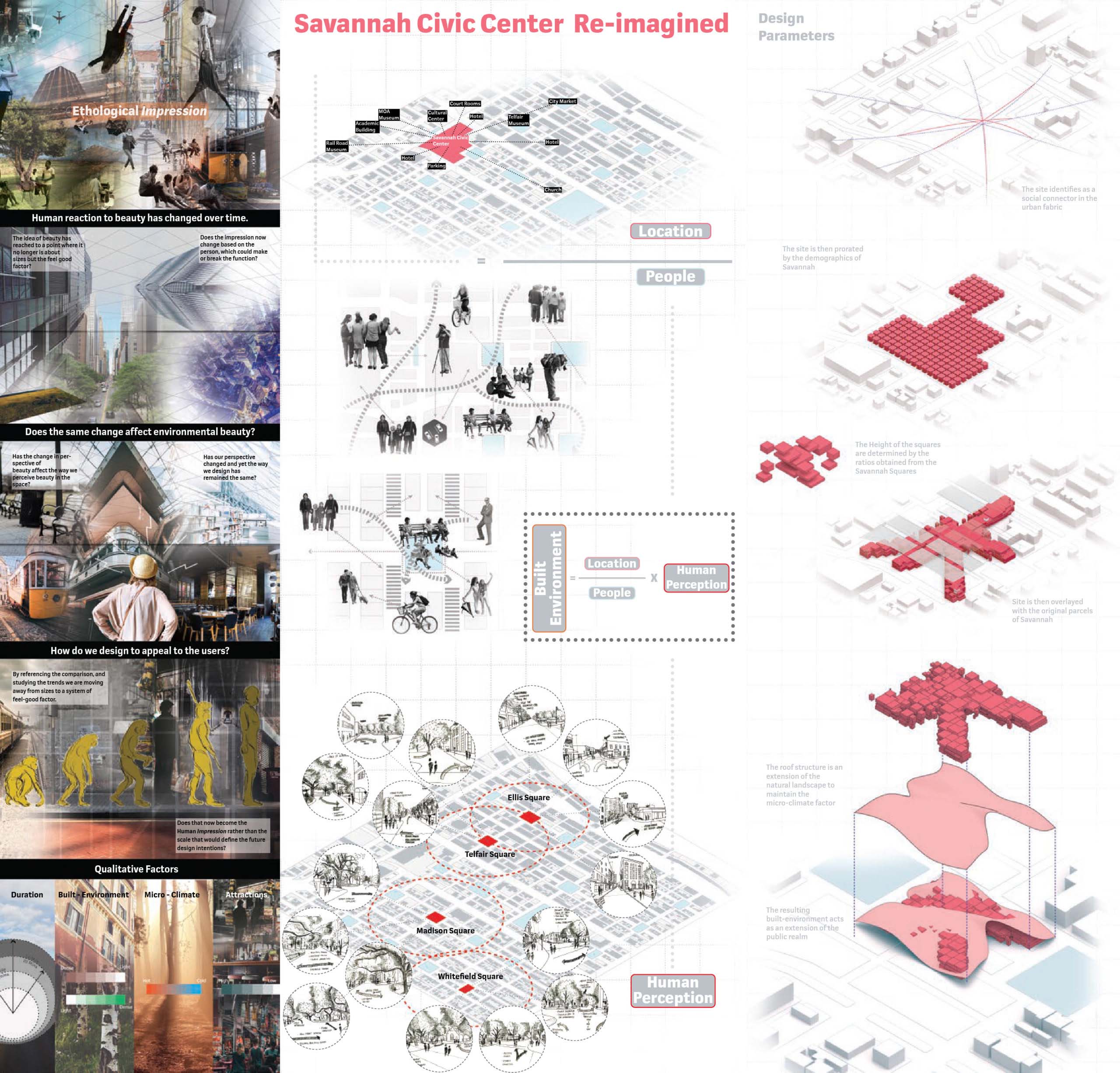2 VotesYear: 2020|Entry Categories: Student Project
Ethological Impression
The built environment is currently designed based on the principles of the human scale. These sets of standards haven’t changed for a long period of time and with the current state of experiencing the built environment moving to the digital realm, the standards need to be updated. The perception of the built environment is moving towards the feel-good factor which cannot be quantified by the principles of the Human Scale. The shift from quantitative factors to qualitative factors ensures that the standards with which the built environment in the public realm is envisioned stays in sync with the change in human perception and that these changes help in transitioning from the ideology of “form follows function” and “function follows form” to “Form Follows Experience”. Hence the study of the research looks at various factors, from the perspective of the human impression and the experience in the public realm rather than just the proportions of human beings.
Design Challenge
Human perception has changed over the years, and with technology defining our perception in this current digital age, it was propitious to explore the idea of Parametricism in the field of architecture.
Parametrics or the idea of parametricism in the field of architecture has always been questioned for its authenticity, its rationale and at what point the line be drawn to use technology that would essentially define the built environment. What type of parameters would need to be used, to what magnitude and how would the outcome be perceived in the public realm?
The physical elements such as the location of Savannah Civic Center and Savannah squares remain the same, but the parameters obtained out of these elements vary based on human perception. With the current state of human perception being aggressively
defined by the constant change in technology, a rationale for Parametricism can be defined based on the objective analysis and
understanding of the physical elements.Physical Context
The building utilizes the following factors in its response to the context of the city of Savannah.
Duration
The factor refers to the maximum distance in which a human being would lose his/her attention. This factor mainly specializes at placing functions in close proximity to each other, such that they are within the realm of the attention span of a human being.
Built-Environment
This factor looks at the density of both the buildings and the landscape aspects that positively/negatively affect the public realm. It works in direct relation to the duration aspect as the type of functions influence the density of the built environment.
Micro-climate
The third aspect to improving the experience of the third realm is to maintain the climatic aspects of the particular location which is achieved by integrating the local ecological systems. This makes easier to access the proposed functions in the built environment.
Attractions
The final aspect of the qualitative factors refers to the breed of functions that constitute the last part of the jigsaw puzzle. This factor comprehends to the category of the function based on the duration within each other being placed in either a dense or light built environment with an ample amount of ecology to help maintain the micro-climate to improve the experience of the public realm.
These factors are the qualitative aspects of human scale which would better be called the Human Impression. The Human
impression mainly looks at improving the experience of the public realm and positively affect its patrons whilst being in the transitory stage.
Share This, Choose Your Platform!




